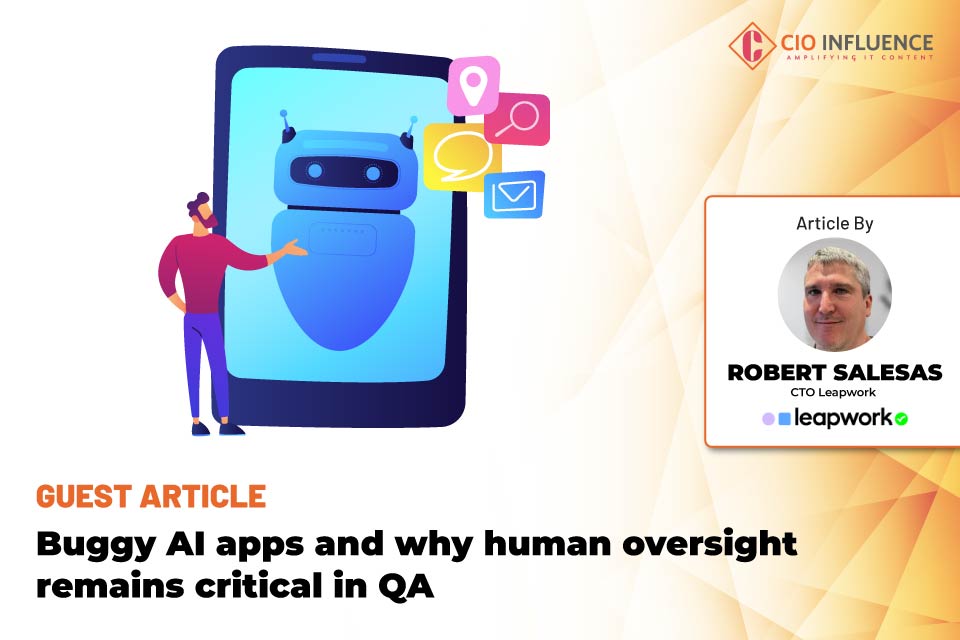From McDonald’s to X’s Grok AI and even Air Canada, we’ve seen a fair share of AI-related failures this year. For organizations striving to accelerate software updates and releases, the impact of a faulty chatbot can serve as a powerful reminder of the costly risks involved. It’s also a reminder of the importance of software testing and quality assurance.
While 85% of organizations have integrated AI applications into their tech stacks over the past year, according to our AI and Software Quality report, 68% of organizations report encountering issues related to performance, accuracy and reliability. These problems are not flaws in AI itself, but rather in how AI is deployed and managed within complex, interconnected systems. The complexity of integrating AI into larger software ecosystems, where it interacts with other technologies, creates unforeseen vulnerabilities. Without rigorous oversight, these challenges can lead to unexpected system failures, inaccurate outputs and poor user experiences.
Also Read: It’s Past Time to Pay Attention to AI Ethics
The rise of AI adoption brings with it the critical need for enhanced testing. AI tools are not plug-and-play solutions that operate flawlessly out of the box. They require continuous evaluation, validation and fine-tuning to meet expectations and deliver on the technology’s vast potential. As companies increase their reliance on AI, they cannot afford to treat it as a “set it and forget it” tool. The intricate nature of AI, particularly its reliance on large datasets and algorithms that evolve, demands a higher standard of quality assurance. This means businesses need to invest in testing processes that adapt and evolve with their AI systems.
Costly AI bugs
If AI bugs go unchecked, the consequences can extend far beyond internal system failures. They can damage customer trust, result in compliance issues and ultimately lead to financial loss. In industries like healthcare, finance, or autonomous vehicles, a single bug can have life-threatening or legally precarious consequences. The stakes are high, which is why organizations should adopt AI-augmented testing tools to proactively identify and resolve potential issues. These tools can assist in automating the validation process, providing faster feedback loops, and detecting subtle bugs that might be missed by manual testing methods.
However, the efficiency of AI-driven testing doesn’t eliminate the need for human oversight. The adoption of AI-augmented testing tools has transformed the landscape of QA, enabling businesses to accelerate release cycles and streamline testing processes. Yet, despite these advancements, there remains a critical role for human oversight, especially in complex systems. AI-driven tools, though powerful, have limitations when it comes to understanding nuanced scenarios, ethical concerns and edge cases. These tools can predict outcomes based on data, but they cannot foresee unpredictable situations in the same way humans can.
Why human oversight remains critical
Our research reveals that 68% of C-suite executives believe that human validation will remain essential for ensuring quality across complex systems. This is because, while AI can automate repetitive, time-consuming tasks, it still lacks the context, creativity, and intuition that human testers bring to the table. AI might catch obvious bugs, but human testers are essential for making judgment calls in ambiguous situations, particularly when it comes to edge cases or scenarios that involve ethical dilemmas.
For example, consider an AI system designed for customer service. While the AI might successfully handle routine inquiries, a human tester is better equipped to evaluate how the system responds to emotionally charged or sensitive issues. Human oversight is key to ensuring AI systems align not only with technical requirements but also with broader business objectives, user expectations and ethical standards.
This is why human testers and AI must work in tandem. AI can process vast amounts of data and identify patterns that might elude humans, but humans provide the critical thinking and creativity that AI lacks. Together, they create a synergy that enhances testing outcomes, ensuring that AI-driven applications perform optimally while maintaining quality across all touchpoints.
Also Read: CIO Influence Interview with Tyler Healy, CISO, DigitalOcean
Collaboration, not replacement
Rather than replacing human testers, AI-augmented tools are transforming the QA landscape. In fact, 53% of C-suite executives report an increase in new positions requiring AI expertise. This shift reflects the evolving role of QA professionals, who now focus more on overseeing AI tools, interpreting complex data and fine-tuning automated processes rather than performing manual, repetitive tasks.
As AI becomes more deeply integrated into business operations, QA professionals are transitioning into roles that require a deeper understanding of AI’s capabilities and limitations. This new breed of testers isn’t just focused on catching bugs – they’re tasked with ensuring that AI systems are trustworthy, reliable and ethical. They play a pivotal role in interpreting AI-driven outputs, providing insights into areas where AI might fall short, and ensuring that AI systems align with organizational values and regulatory standards.
The collaboration between AI and humans is essential to future-proofing businesses in an increasingly automated world. AI can enhance the speed and efficiency of testing, but humans provide the final layer of validation, ensuring that systems not only function correctly but also deliver on customer expectations and business objectives.
Unlocking AI’s potential with robust QA
Ultimately, the future of AI lies in collaboration – between humans and machines. AI-driven QA will continue to play a vital role in improving software quality, but human oversight will remain indispensable, especially in complex systems where judgment and intuition are critical. Organizations that invest in both AI-augmented tools and the expertise of human testers will be better positioned to unlock the full potential of AI, transforming risks into rewards.
By combining the strengths of AI’s speed and data-processing power with the nuanced understanding that human testers bring, businesses can achieve higher-quality outcomes. This collaboration ensures that AI applications deliver consistent, high-quality results while maintaining the trust and reliability that customers and stakeholders expect.
[To share your insights with us as part of editorial or sponsored content, please write to psen@itechseries.com]


